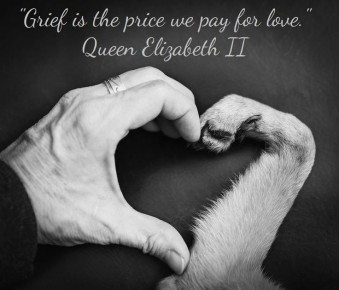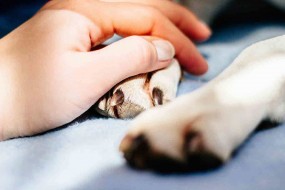How do I know it is time to say goodbye?

Sadly few of our pets pass away peacefully in their sleep.
As caring pet owners we try to make sure that our pets stay fit and healthy enabling them to live to a good old age with a good quality of life. Part of this responsibility is to make the decision of finally letting go, often referred to as "putting to sleep" or "euthanasia", at the right time, to ensure their quality of life does not deteriorate.
Indications of deterioration in quality of life could be ...
1. Severe and sustained loss of appetite
2. Reluctance to move about
3. Reluctance to interact with the family and other pets
4. Poor response to veterinary treatment
5. Uncontrolled pain/discomfort
6. Faecal or urinary incontinence (upsetting for both the pet and owner)
Keeping a daily diary of a pets life can help towards the end, where each daily page is divided into two columns. In column one list all the good points for the day, and in column two list all the bad points. Doing this gives a visual display of when a pet is having more bad points in a day and helps show a progressive deterioration in their health and quality of life.

Is there anything else that could be done?
Our vets are happy to talk through any symptoms and treatment options with you, and hopefully help you and your family make the appropriate decision. Sometimes what seems like a hopeless situation can have treatment options.
When and where to say goodbye?
Euthanasia can be arranged by appointment at the surgery, at a quiet time and convenient to yourself in most cases. It is also possible to arrange a home visit for euthanasia. In these cases a vet and a nurse will come to your house. This will incur additional fees for this service and certain times of day maybe restricted.
Am I able to stay with my pet?
Yes. This is each individual's choice, some people choose to stay with their pet in their final moments, while others find it is too emotional and upsetting to stay, and just say goodbye before the event. It is possible should you prefer not to stay, to return after a pet is put to sleep and say a final goodbye.

What will happen?
The vet or nurse will ask you to sign a consent form to give permission for euthanasia. At this time, they will check if you would like to take your pet home afterwards or ask us to make arrangements (choices discussed below).
Euthanasia is generally a peaceful process. It involves injecting an overdose of anaesthetic agent into the vein of your pet, usually on the foreleg. Sometimes a catheter may be inserted before or sedation may be required, if your pet is particularly nervous or uncomfortable.
After the injection they will lose consciousness rapidly, the breathing will subside with final arrest of the heartbeat. The vet will check the heart has stopped and confirm the pet has passed away.
Sometimes muscle twitching is seen and some pets may give involuntary reflex gasps, which are unavoidable and will vary between animals. These are only reflex actions and not a sign of life, but can be upsetting to see if anyone has never seen death in an individual human or pet. Your pets eyes will remain open as their lids to not close over the eyeball, and they can leak urine or faecal matter as bodily control ceases.
What will happen after?
There are various options - Our staff are happy to discuss the options and costs
1. Burial at home
2. Non-individual cremation, where your pet is cremated with other pets. With this type of cremation, no ashes are returned to you.
3. Individual cremation, where your pet is individually cremated and the ashes collected afterwards and returned to you either in a casket, with a plaque, or in a scattering tube, to allow a pet's ashes to be scattered at a pet's favourite spot or walk.
We can arrange this for you or some clients choose to arrange it themselves.
When will I need to decide?
We encourage you and your family to discuss these options before your pet is put to sleep, and let us know. However, if you are undecided and need time after the loss to make a decision, it is possible for us to keep your pet for a short time afterwards, to allow you and your family to decide.
Coping with the loss
Losing a pet is like losing a member of your family. Everyone deals with the grief in different ways. The feelings of loss can be overwhelming and difficult to cope with. try to think back to pleasant and funny memories in your pets life and focus on these rather than the loss. Support each other during this time, and do not be ashamed to show grief. Do not forget your other pets will be feeling the loss too, and try to alter their daily routines for feeding and walks, as the old ones will be associated with their lost friend.
Sometimes it helps to speak to staff at the practice, to share memories or simply to re-affirm it was the right decision. Please feel free to ring and speak to us.
Finally we have a dedicated web page, ABSENT FRIENDS, where after sending us a photo and a small piece about your pet we can upload it for a permanent memory